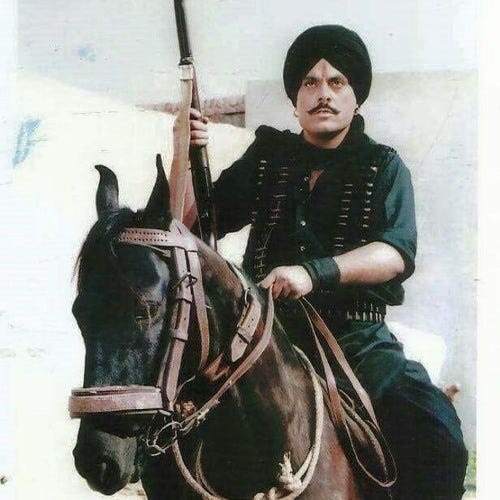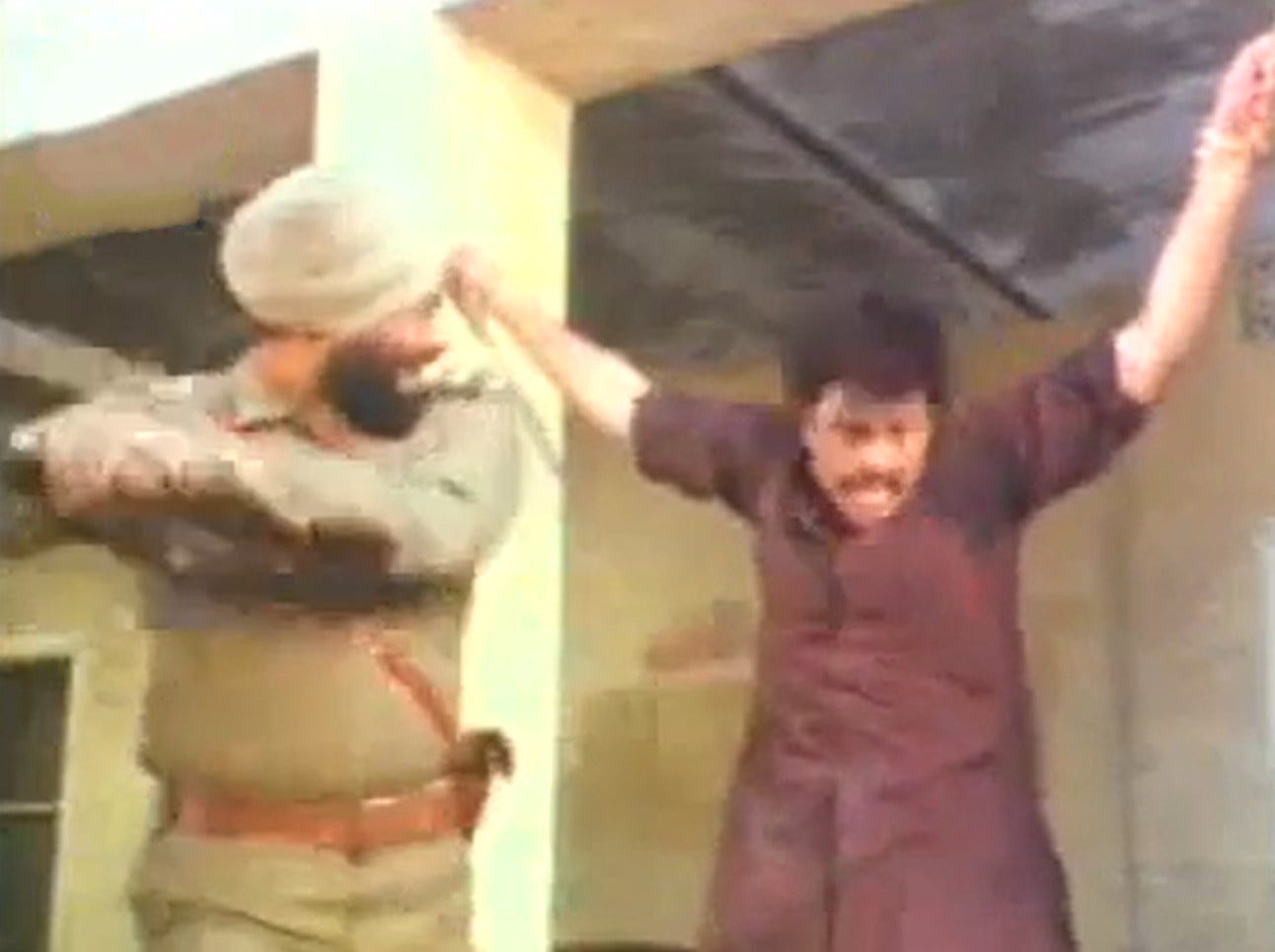Jatt Jeona Maur: An allegory for kharkuvaad
An analysis of the original Jatt Jeona Maur (1992) and the allegorical themes it has pertaining to kharkuvaad.
The folklore of Jeona Maur
The story of Jeona Maur takes place in the early 20th century, during British rule over Punjab. It is said to take place in Maur village in the Malwa region, specifically in Sangrur but others also suppose his village to be somewhere in the regions adjourning the Naina Devi Mandir.
Jeona Maur was the brother of Kishna Maur, a famous dacoit, who had been backstabbed by his close friends, most notably Ahmed Dogar. Jeona Maur was known as a Robin Hood-esque figure, who would redistribute wealth from the hands of the wealthy and give to the destitute. Eventually, he killed those who had betrayed his brother and was chased by the police to the Naina Devi Mandir until he reached a hill. He was given a divine stipulation by Naina Devi to jump over the hill and not look back. The legend says he looked back and fell to his death.
Allegories in Punjabi art
Allegories have been consistently used throughout Punjabi literature and art to denote certain themes. Bhai Vir Singh wrote the novel of ‘Sundari’, in which the institution of the Khalsa is shown to revitalise the native Punjabi Hindu population, this is an allegory of growing social degeneracy among Sikhs and to show how the Singh Sabha revitalised Sikhi.
Perhaps, a more similar example is that of the song ‘Patta Patta Singhan Da Vairi’ written by Hans Raj Hans, about a Khatri Hindu converting to Sikhi against the tyranny of the Mughals. This was an allegorical representation for kharkuvaad that took place in Punjab after Operation Blue Star. After releasing this song, there was an immediate crackdown on Hans Raj Hans by the Congress govt. Similarly, the film Jatt Jeona Maur also contains similar allegorical references about kharkuvaad, ongoing at the same time as the film’s release.
Key scenes
The film was released in 1992 and was filmed across 1991; an era when kharkuvaad was at its peak. Thus, it contains many scenes that display a parallel between ongoing situations that occurred across Punjab, involving kharkus too. The film begins with a quotation from Guru Gobind Singh’s Zafarnama: ‘Chu kar az hama heelte dargujasht, Halal ast burden ba shamsheer dast (All modes of redressing the wrong having failed, the raising of the sword is pious and just); supporting Jeona’s motive for wielding arms.
The first key scene takes place after the arresting of Kishna, where police enter Jeona’s house and start thrashing him and Kishna’s wife. In this scene, the police have Jeona tied in ropes whilst Kishna’s wife is assaulted, eventually leading to her death. This act of violence unwittingly radicalises Jeona as he escapes free of the shackles and proceeds to kill the affiliated police officers. The obvious allegorical parallel here is the link to false encounters that were undergone during the Punjab insurgency; sometimes radicalising bystanders into kharkuvaad. Many of the low level kharkus were radicalised into the movement through police atrocities.
Another notable scene is where Jeona is given a gun by the dacoit, Chatar Singh, an accomplice of Kishna, who says living a life of decency is difficult in hard times, which is why Kishna decided to take up arms. Jeona holds the gun and vows to avenge the death of his sister-in-law. The themes in the scene reflect the kharku movement through how the dacoits concealed themselves; similar to how kharkus used to conceal themselves at day and then only came out at night. After this scene, the dacoits have frequent shootouts with the police, reflecting their enmity with them.
Jeona’s soul sister is frequently shown in the film too, as the wife of a police officer trusted to arrest Jeona. This very same police officer ends up being the cause of his death at Naina Devi. Family relations among kharkus and police officers were a big cause of animosity; causing landowners to side either way just based on enmity. This case is quite similar to Charanjit Singh Channa, Balwinder Singh Jattana’s associate, who had a brother who was a police officer.
The director of Jatt Jeona Maur, Ravinder Ravi, was known for directing a plethora of successful Punjabi films including Anakh Jattan Di, Badla Jatti Da and Dil Da Mamla. He is also known for directing films like Kaum De Heere, a film eulogising Beant and Satwant Singh, the two bodyguards who carried out an assassination of the erstwhile prime minister of India, Indira Gandhi, in revenge for the sacrilege amounted by Operation Blue Star.
In addition, the film was influenced off the real story of Jeona Maur and kavishars were consulted. According to Master Bheem Maur, an elder kavishar from his pind, Jeona Maur was taught Gurmukhi at the Udasi dera of Baba Dudhadhari and would often recite Chandi Di Vaar.
Conclusion
Many of the themes are quite obviously influenced by kharkuvaad but the film doesn’t shy away from Jeona’s background as a devi worshipper; invocations to Naina Devi are common especially towards the climax of the film. Under this analysis, the film takes a new dimension especially considering how a syncretic figure like Jeona Maur, who was a dacoit during the institutionalisation of Singh Sabhas, takes on an allegorical representation of a kharku.






